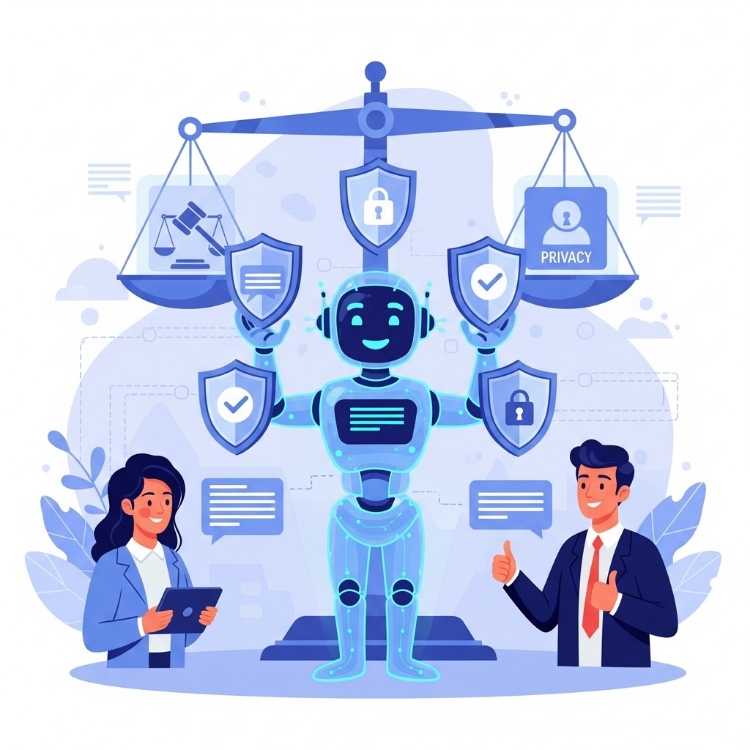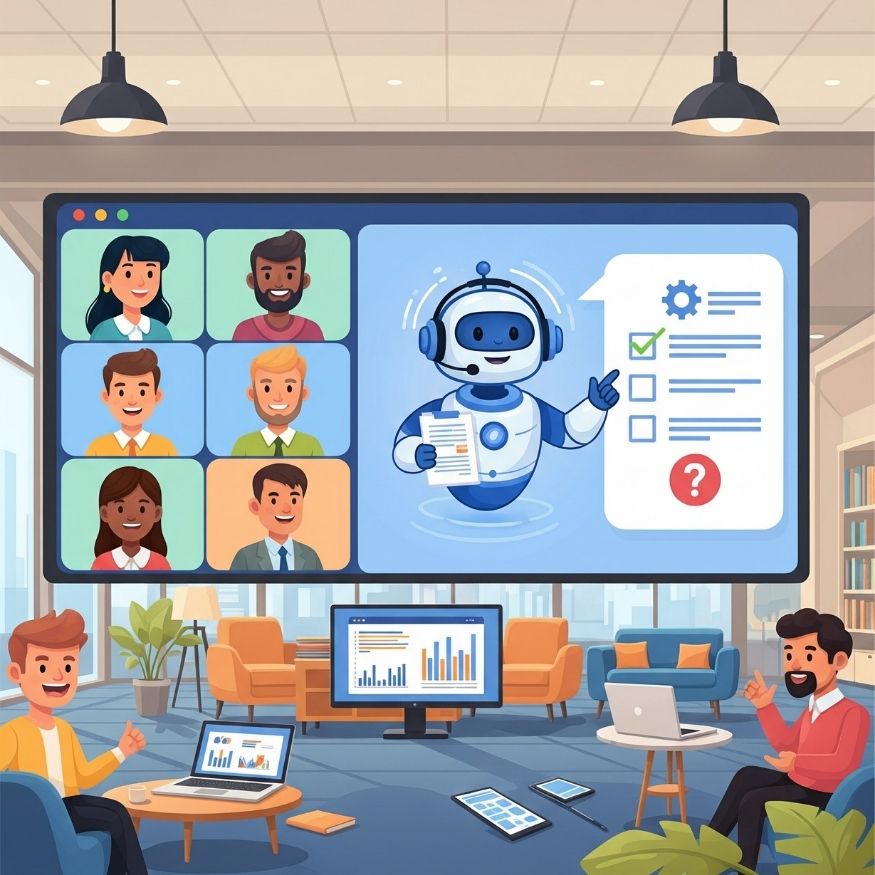Conversational AI in HR: Faster and More Helpful Responses
Conversational AI in HR: Faster and More Helpful Responses
Employee satisfaction at work continues to face challenges, with recent data showing that only 21% of employees worldwide feel engaged in their roles. In the U.S., that number sits at 32% as of May 2025, marking a slight uptick but still highlighting room for improvement. These figures come at a cost: disengaged workers lead to billions in lost productivity, with global estimates reaching $438 billion in 2024. Part of the issue stems from slow or unhelpful HR support, where employees wait days for answers to simple questions, leading to frustration and disconnection.
Conversational AI, a branch of artificial intelligence, offers a practical way to address this by providing quick, tailored responses to HR queries. Tools like chatbots integrated into everyday platforms can handle everything from benefits inquiries to feedback collection, making support feel immediate and relevant. For employees, this means getting the help they need without delays. For HR teams, it lightens the load on routine tasks while ensuring they remain informed on important matters. At Botable.ai, our focus on AI-driven solutions helps teams in human resources deliver this kind of responsive support, drawing from our work in areas like employee self-service.
In this article, we'll break down how conversational AI works in HR, the ways it speeds up responses for employees, how it saves time for HR professionals without cutting them out, real examples, ethical points to consider, and steps to get started. If you're dealing with HR bottlenecks or looking to improve team satisfaction, these insights could help shape a more responsive approach.
.jpg)
What Is Conversational AI in HR?
Conversational AI involves systems that understand and respond to natural language, much like a back-and-forth chat. In HR, this often means chatbots or virtual assistants built into tools such as Slack or Microsoft Teams, where users type or speak questions and get instant replies. These aren't rigid scripts; advanced versions use machine learning to adapt based on context and past interactions.
For example, an employee might ask, "How do I update my address?" The AI pulls from secure HR data, confirms the change, and guides them through it, all in seconds. This technology has grown, with 64% of leaders planning to increase investments in chatbots in 2025, and 59% of users believing generative AI will enhance service quality.
The appeal lies in its ability to make HR interactions feel straightforward and supportive. Conversational AI is shifting HR self-service toward more user-friendly experiences by handling conversations naturally. At Botable, we tailor these tools for HR needs, aligning with broader shifts where more than 30% of all workers could see at least 50% of their occupation's tasks disrupted by generative AI. Importantly, it keeps human oversight in place, escalating complex issues to HR staff.
This setup not only accelerates help but also builds trust by being available anytime, which is key in hybrid or global teams.
{{cta}}
Delivering Faster Answers to Employees
One of the main advantages for employees is the rapid access to information. No more digging through lengthy emails or waiting for HR office hours; conversational AI provides responses in real time. This quick turnaround reduces downtime and helps people stay productive.
Take benefits questions during busy periods like open enrollment. An employee can chat about plan options, and the AI explains them clearly, perhaps even comparing choices based on their profile. This personalization makes the help more useful, leading to higher satisfaction. In fact, it is expected that 70% of customer interactions will be handled by AI technologies by 2025, with chatbots resolving many issues and improving response times overall.
For diverse teams, features like real-time translation break down language hurdles, as explored in Botable's post on overcoming language barriers with AI chatbots. Employees in roles like sales or manufacturing can get policy details or training info without pausing their work.
Feedback collection also benefits from this speed. Workers can share thoughts via quick chats, and the AI summarizes them anonymously for HR review. With tools enabling real-time insights, this approach helps catch issues early and boosts a sense of being heard, as seen in how companies are increasingly using AI for continuous feedback to support growth.
Overall, these fast, helpful interactions contribute to better job satisfaction. Studies show that organizations using AI-powered engagement tools often report notable improvements in employee morale. It's about making support feel effortless, so employees can focus on their contributions.

Saving HR Time While Keeping Professionals Involved
HR teams handle a high volume of repetitive questions, which can eat into time better spent on strategic work. Conversational AI takes on these basics, answering queries automatically and routing tougher ones to the right person with full context.
This automation leads to real time savings. For instance, 90% of workers using AI report it helps them save time on work tasks, a trend extending to HR functions. By handling routine tasks, HR pros can shift focus to areas like talent strategy or team building.
Crucially, the technology doesn't isolate HR; dashboards provide overviews of interactions, highlighting trends like common questions or escalation rates. If a chatbot spots a sensitive issue, it flags it immediately for human input. Botable's HR chatbot FAQ explains how these systems maintain this balance, ensuring nothing falls through the cracks.
In practice, this means HR stays in the loop without micromanaging. Analytics from chats can inform policy updates, and with around 82% of HR professionals using AI in their daily work as of 2025, adoption is rising. For departments like human resources at Botable, this integration supports compliance and quality assurance by logging all exchanges.
The result? HR teams feel less overwhelmed, with more capacity for meaningful engagements that drive satisfaction.
Ethical Aspects of Conversational AI in HR
Using AI responsibly is essential. Issues like data privacy require secure handling, with clear policies on how information is used. Trends emphasize ethical AI, including explainable systems to avoid bias.
Transparency helps; let users know when they're chatting with AI and how to reach a person. Botable's approach, as in our responsible AI and HR post, prioritizes fairness.
By focusing on these, organizations can build trust and ensure the tech supports positive outcomes.
{{cta}}
A Step-by-Step Guide to Implementing Conversational AI in HR
Human resources teams often deal with a steady stream of questions from employees about benefits, policies, and onboarding. With tools like conversational AI, these interactions can become quicker and more straightforward. Recent data shows that 80% of organizations plan to integrate AI into HR functions by the end of 2025. This shift helps HR professionals handle routine tasks while focusing on strategic work, and it makes support more accessible for employees.
Conversational AI, such as chatbots, fits into daily tools to provide instant answers, showcasing how artificial intelligence can streamline communication. At Botable.ai, we specialize in these solutions for HR, with seamless connections to platforms like Slack and Microsoft Teams. This guide walks through the key steps to get started, emphasizing integrations with common systems like email and HR information systems (HRIS) such as Workday or BambooHR. By following these, you can set up a system that saves time and improves satisfaction.
Step 1: Assess Your HR Needs and Set Goals
Start by reviewing your current HR processes. Identify pain points, like frequent questions about payroll or time off that clog inboxes. Gather input from your team on what employees ask most often. Tools like surveys can help pinpoint these areas.
Set clear goals, such as reducing response times by 50% or handling 70% of basic queries automatically. At Botable, we recommend linking this to your human resources department setup, where conversational AI can support compliance and quality assurance too.
Consider how integrations play in from the start. If your team uses Slack for quick chats or Microsoft Teams for meetings, prioritize AI that works there. This assessment phase typically takes a week or two and sets a strong foundation.
.jpg)
Step 2: Choose the Right Conversational AI Provider
Look for a provider that offers flexible, secure tools tailored to HR. Key features include natural language understanding and easy customization. Botable.ai stands out here, with options that integrate directly into your existing tech stack.
Evaluate based on user reviews and demos. Check for compliance with data privacy standards, especially if your organization handles sensitive info.
Botable's solutions connect smoothly with Slack and Microsoft Teams, making it simple to embed AI where your team already communicates. This choice impacts later steps, so test a few options before committing.
Step 3: Integrate with Your Existing Systems
Integration is where the real value shines. Begin by connecting the AI to your communication platforms. For Slack, set up the chatbot to respond in channels or direct messages. Microsoft Teams allows similar embedding, letting employees ask questions during calls or in group chats.
Next, link to email systems. This enables the AI to scan incoming queries and auto-reply or escalate them. For deeper functionality, integrate with HRIS platforms. Workday or BambooHR can feed data on employee records, so the AI pulls accurate info for queries like "What's my leave balance?"
HR chatbots often integrate with tools like Salesforce for broader workflows, ensuring a unified experience. Botable makes this straightforward, with APIs that sync data securely. Test these connections early to avoid glitches. This step might involve IT support and could take a few days to a week.
{{cta}}
Step 4: Customize and Train the AI
Once integrated, tailor the AI to your company's voice and policies. Upload your HR documents, like handbooks, so it can reference them accurately. Train it on common questions using sample data.
For integrations, configure responses to fit each platform. In Slack, use emojis for a casual tone; in Teams, keep it professional. Email integrations might include templates for follow-ups.
Use Botable's crawl-walk-run guide to AI chatbots in HR for phased training. Monitor initial interactions and refine based on feedback. This customization ensures the AI feels like part of the team, not a generic bot.
Step 5: Pilot, Test, and Roll Out
Launch a pilot with a small group, say one department. Track metrics like query resolution time and user satisfaction. Adjust based on what works, such as tweaking integrations for faster Slack responses.
After testing, roll out company-wide. Train employees on how to use it, perhaps with quick demos. 50% of U.S. enterprises will add AI to core HR functions by 2025, so starting small helps manage the transition.
Continue monitoring with analytics from your HRIS or platforms like Teams. Botable provides dashboards to spot trends and improve over time.
Implementing conversational AI in HR streamlines support and frees up time for everyone. By focusing on integrations like Slack, Microsoft Teams, email, and HRIS, you create a connected system that employees appreciate. Ready to try? Contact Botable's human resources team for guidance.
Answers your employees need, right when they need them
Meet Botable — the AI chatbot that handles everything from simple FAQs to complex, multi-step questions, so your team can focus on what matters. Built for HR, QA, and beyond.
Continue reading
Ready to see what Botable can do for you?
Book your demo now to see how Botable can transform your workplace.
Identify your unique challenges
Flexible pricing options
Easy integrations
Step-by-step implementation plan
Customize Botable for your workflow
Book a demo
.webp)


.jpg)
.jpg)